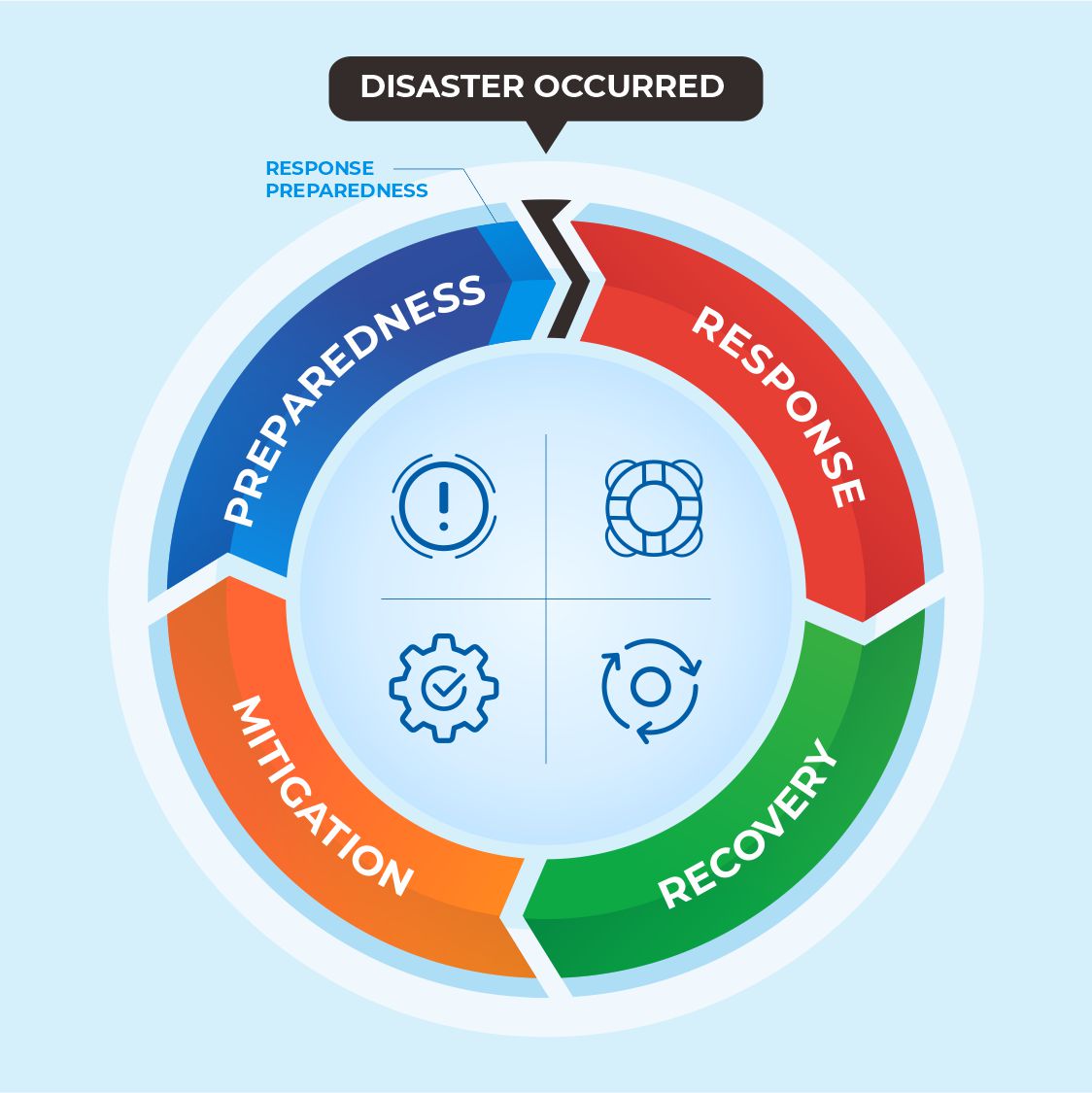
DISASTER MANAGEMENT CYCLE
Coordinating regional efforts on disaster management is the primary function of the AHA Centre, which requires strong processes and approaches to ensure successful coordination across a range of levels and with numerous parties. One of the key approaches for undertaking disaster management work – whether for the AHA Centre or all other disaster actors – is through utilisation of the Disaster Management Cycle, and its expansion and uptake across the ASEAN region.
The Disaster Management Cycle (DMC) itself sometimes varies in specifics, but generally follows the same key phases in a circular motion. It is important to recognise that this is not a ‘linear’ approach, but instead a cycle, with many elements of its final phases ‘feeding back’ into the early phases of the DMC.
PREVENTION
Prevention aims to directly avoid the onset of disaster and therefore its adverse impacts. It focuses on actions taken to avoid disaster situations, including examples such as land regulations to stop degradation, or development of river levees to prevent floods. The outright avoidance of adverse impacts of hazards and related disasters.
MITIGATION
Mitigation aims to limit or lessen the impact of potential disasters, usually when initial prevention methods have not been undertaken or were not successful. An example is the construction of earthquake resistant buildings, as there is little to be done about preventing earthquakes, however such construction can mitigate the impact.
PREPAREDNESS
Preparedness covers the knowledge and skills held by all actors to effectively anticipate, respond to, and recover from the impacts of disaster. This may include government processes to respond directly, community understanding of how to keep safe when disaster strikes, or organisations planning what are priorities for people during the aftermath of a disaster event.
RESPONSE
Response is formed by the direct emergency assistance after a disaster strikes, and is usually focused on the speedy saving of lives, and ensuring basic needs of affected communities are provided. There are many types of activities and focus areas in disaster response, including (but not limited to) assessments, food and non-food item provision, water access, sanitation and hygiene service delivery, and other key health and shelter activities.
REHABILITATION
Rehabilitation takes place in the early stages after the initial disaster response, with the aim to establish key services required for a functioning community in the short-term. It may include the development of camps for those who have lost their homes, or ensuring education can continue for children around the disaster site.
RECONSTRUCTION
This phase aims to re-develop the infrastructure and services required for long-term recovery, after the initial rehabilitation has taken place. It includes permanent housing development, full restoration of services, and other requirements to return a community to its pre-disaster state.
RECOVERY
Not only does the recovery phase include ongoing restoration of pre-disaster situation, but also involves improving and increasing infrastructure and services for affected communities. A significant part of this phase – and one that ‘closes the DMC loop’ – is the integration of prevention, mitigation and preparedness activities to ensure a more resilient and safe community in the face of future disasters.
Written by : William Shea

